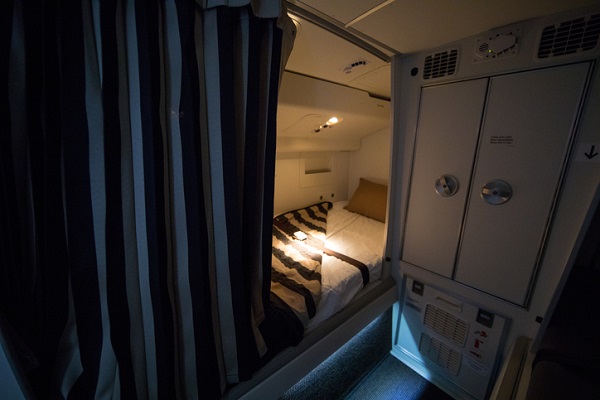Are you curious to know what cabin crews do during their layovers? Read on to find out!
Rest Is a Top Priority During Many Crew Layovers
Cabin crews often spend precious layover hours catching up on rest. On shorter stops between domestic services, flight attendants often follow a quick meal with an energizing catnap. For longer international services, a good night’s sleep allows flight attendants to wake up refreshed—albeit in a different time zone—and take on a new day’s work. In the industry, prioritizing sleep is known as the ‘slam-click’, so-named for the sound of a hotel door being shut and locked. At the end of a long flight, cabin crew members often do the ‘slam-click’, so that they can feel energized and relaxed.

A restful layover can include more than just sleeping. When there is little time for grand excursions, layovers are a great opportunity to relax in a nice hotel and catch up with home life. When long flights and time zone shifts demand a substantial layover, flight attendants can relax by the hotel, taking advantage of nearby shops, restaurants, and spa services.
Layovers Can Be a Time for Fun and Exploration
When the tourist mood strikes, longer layovers provide a few hours to venture beyond the familiar hotel lobby and explore a new locale. Flight attendants are on a fairly unique schedule, and typically require an understanding—and energetic—tour guide. Luckily, past cabin crews have forged paths in many attractive destinations, identifying prime visiting options for the layover time crunch. Flight attendants are spoilt for choice in world capitals, which often offer quick tours for busy professionals.

Many flight attendants become well-versed in the best locations to visit and best tours to try. In some cases, former flight attendants even open their own travel businesses, with tours that cater specifically to visiting crew members. Graduates of flight attendant college can even consult websites and applications like World of Crew, which detail travel options for airline professionals around the world.
Students in Flight Attendant Training Should Take Note of Different Regulations
Not all layovers are created equal. Crew downtime varies around the world, with regulators imposing different standards for layover rest. Rest hour minimums are typically set by oversight bodies like the European Aviation Safety Agency (EASA), which accounts for flight time and time-zone acclimatization. With longer flights and greater time zone differences, Australia’s Civil Code demands a minimum of 24 rest hours for crews.

While legal requirements shape industry standards, airlines typically go beyond the strict minimum to keep their employees happy—and prevent them from finding more rest under another employer! A short layover can mean little more than a night’s sleep, while a longer one might afford social and travel opportunities. Students in flight attendant training can be mindful of international regulators and airline policies, which can have an impact on how much downtime they get.

Are you looking to start an exciting career as part of a cabin crew?
Contact Eton College to know more about our flight attendant course!



